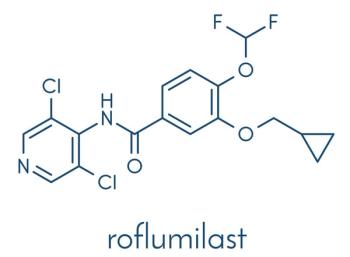
Eccrine Acrospiroma
A 67-year-old man was concerned that the peeling lesion near his eyebrow was cancer.
A 67-year-old man was concerned that the peeling lesion near his eyebrow was cancer.
The 1-cm, well-demarcated, flat, finely nodular, erythematous lesion had been present for 1 year on the left supraorbital area. The patient was given a local anesthetic, and the lesion was excised.
Drs Robert P. Blereau, MD of Morgan City, La, and J. B. Pecot of New Iberia, La, report that microscopic examination of the lesion revealed an eccrine acrospiroma with superimposed actinic keratosis. Also noted were prominent parakeratosis, solar damage, and slight squamous atypia.
Eccrine acrospiromas are also called nodular hidradenomas, clear cell myoepitheliomas, and clear cell sweat gland adenomas. These partially cystic, multilobular, benign neoplasias are composed of squamous cells with glycogen-rich cytoplasm. Generally ranging in size from 0.5 to 2 cm, these nodules have no site predilection and can occur on the face, scalp, chest, and abdomen.
Occasionally, these lesions recur after local excision. Malignant variants exist but are very uncommon; they seem to occur de novo rather than from preexisting benign lesions.
Newsletter
Enhance your clinical practice with the Patient Care newsletter, offering the latest evidence-based guidelines, diagnostic insights, and treatment strategies for primary care physicians.



















































































































































































































































































